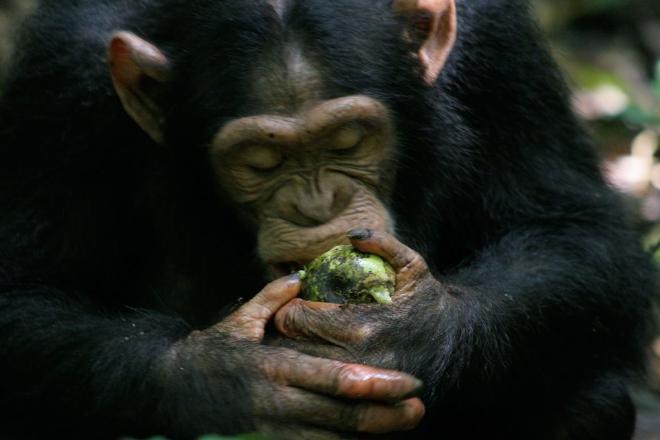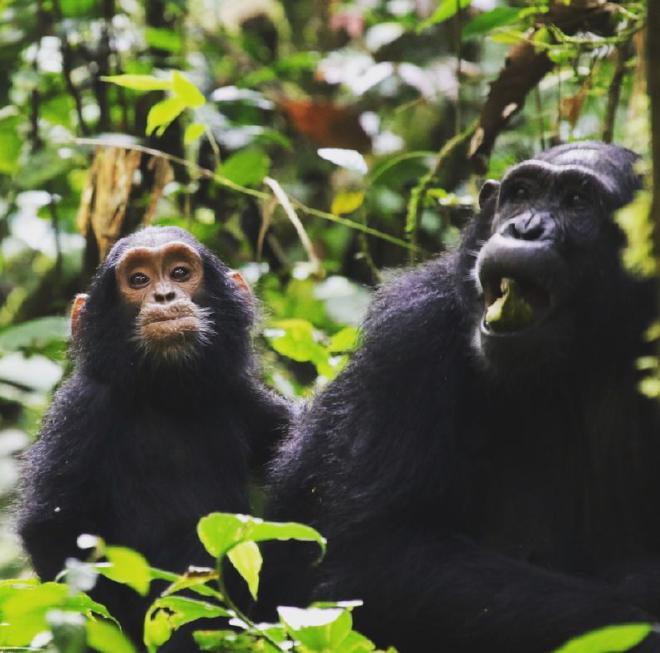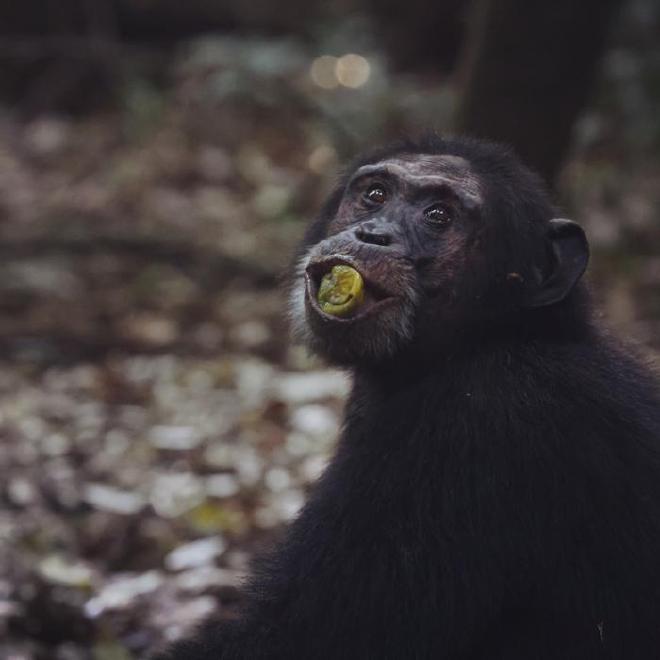

“Scrumping”1 is the name coined in a paper led by researchers at Dartmouth and the University of St Andrews in Scotland for the fondness apes have for eating ripe fruit from the forest floor. These primates’ palate for picked-up produce has taken on new importance in recent years, the researchers reported in the journal BioScience.
In an article written by Morgan Kelly Dominy said that in other words, scrumping by no name at all just looks like eating fruit. The researchers wrote that geneticists reported in a 2015 study that eating fermented fruit may have triggered a single amino acid change in the last common ancestor of humans and African apes that boosted their ability to metabolize alcohol by 40 times.

“It’s a fascinating idea, but nobody studying these ape species, or Asian apes, had the data to test it. It just wasn’t on our radar,” Dominy said. “It’s not that primatologists have never seen scrumping—they observe it pretty regularly. But the absence of a word for it has disguised its importance. We’re hoping to fill an important void in scientific discourse.”
“Scrumping by the last common ancestor of gorillas, chimpanzees, and humans about 10 million years ago could explain why humans are so astoundingly good at digesting alcohol”. -Nathaniel Dominy, professor of anthropology-
Scrumping #
The researchers set out to better determine how common their new behavior classification is among great apes. They examined dietary reports of orangutans, chimpanzees, and mountain and western gorillas observed in the wild.
Feeding events were cross-referenced with how high off the ground the animal was when it ate, as well as the height at which the fruit grows. If an ape at ground level was recorded eating a fruit known to grow in the middle or upper levels of the forest canopy, it was counted as scrumping.
The authors of the BioScience paper propose that metabolizing ethanol may let African apes safely eat the ripe, fermented fruit they find on the ground. This adaptation could free them from competing with monkeys for unripe fruit in trees. It also could spare large apes the risk of climbing and possibly falling out of trees, which a 2023 study by Dominy and Fannin reports is dangerous enough to have influenced human physiology.
Given that chimpanzees consume about 10 pounds of fruit each day, the team’s analysis suggests they ingest a nontrivial amount of alcohol, Dominy said. That level of intake suggests that chronic low-level exposure to ethanol may be a significant component of chimpanzee life, and a major force of human evolution.
The next step is measuring levels of fermentation in fruits in the trees versus fruits on the ground to better estimate alcohol consumption in chimpanzees, Dominy said.

“Scrumping by the last common ancestor of gorillas, chimpanzees, and humans about 10 million years ago could explain why humans are so astoundingly good at digesting alcohol,” Dominy said. “We evolved to metabolize alcohol long before we ever figured out how to make it, and making it was one of the major drivers of the Neolithic Revolution that turned us from hunter-gatherers into farmers and changed the world.”

Humans might also have retained social aspects that apes bring to scrumping, said Catherine Hobaiter, a professor of psychology and neuroscience at St Andrews and co-corresponding author of the study.
“A fundamental feature of our relationship with alcohol is our tendency to drink together, whether a pint with friends or a large social feast,” Hobaiter explained. “The next step is to investigate how shared feeding on fermented fruits might also influence social relationships in other apes.”
‘Fighting for’ scrumping #
The word scrumping will catch on if other scientists see its descriptive value, Dominy said. The paper in BioScience cites other words invented to capture new concepts, such as “symbiosis”—coined in 1877—and the now ubiquitous “meme,” introduced by evolutionary biologist Richard Dawkins in 1976.
“These are great examples of words that we never knew we needed, until we did,” Dominy stated. “If the term is useful, then it will catch on—that’s natural selection at work.”
Citation #
- The paper Fermented fruits: scrumping, sharing, and the origin of feasting was published in BioScience journal. Authors: Nathaniel J Dominy, Luke D Fannin, Erin R Vogel, Martha M Robbins & Catherine Hobaiter.
Nathaniel J Dominy, Luke D Fannin, Erin R Vogel, Martha M Robbins, Catherine Hobaiter, Fermented fruits: scrumping, sharing, and the origin of feasting, BioScience, 2025;, biaf102, https://doi.org/10.1093/biosci/biaf102
Nathaniel J. Dominy (nathaniel.j.dominy@dartmouth.edu) is affiliated with the Department of Anthropology and the Department of Biological Sciences and Luke D. Fannin is affiliated with the Department of Anthropology and the Graduate Program in Ecology, Evolution, Environment, and Society, both at Dartmouth College, in Hanover, New Hampshire, in the United States. Erin R. Vogel is affiliated with the Department of Anthropology, Center for Human Evolution Studies, at Rutgers, the State University of New Jersey, in New Brunswick, New Jersey, in the United States. Martha M. Robbins is affiliated with the Department of Primate Behavior and Evolution at the Max Planck Institute for Evolutionary Anthropology, in Leipzig, Germany. Catherine Hobaiter (clh42@st-andrews.ac.uk) is a primatologist affiliated with the School of Psychology and Neuroscience at the University of St Andrews, in St Andrews, Scotland, in the United Kingdom.
Acknowledgments #
The authors thanked Sri Suci Utami Atmoko, Cecilia Gaposchkin, Steven Kangas, Gisela Kopp, Peter Lucas, Bill McGrew, Beth Mattison, Tatang Mitra Setia, Prima Lady, Ben Snyder, Alison Stones, Maria van Noordwijk, Andrew Robbins, Jack Richardson, Klaus Zuberbühler, and the staff and students of Budongo Conservation Field Station, Bwindi Gorilla Project, Fakultas Biology Universitas Nasional, Loango Gorilla Project, Tuanan Orangutan Research Project, and the University of Zurich. LDF was supported by the National Science Foundation (grant no. DGE-GRF 1840344).
- The article How ‘Scrumping’ Apes May Have Given Us a Taste for Alcohol, written by Morgan Kelly, was published in Dartmouth’s news section website
Contact [Notaspampeanas](mailto: notaspampeanas@gmail.com)
-
From English Wiktionary: Etimology: From a dialectal variation of scrimp, probably from Middle Dutch or Middle Low German schrimpen (“to shrivel up, shrink”), ultimately from Proto-Germanic *skrimpaną, *skrimbaną (“to shrink”), related to Old English sċrimman (“to shrink, draw up, contract”). Related to dialectal English skrammed (“benumbed, paralysed”), English shrimp. Noun: scrump (plural scrumps): 1. (dialectal) Anything small or undersized.. 2. (dialectal) A withered, shrivelled, or undergrown person*. 3. (dialectal) A small apple. ↩︎

